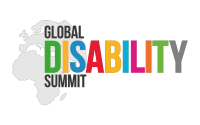21 August 2006Alister Doyle
Surging demand for irrigation to produce food and biofuels is likely to aggravate scarcities of water but the world's supply is not running out, an international report said on Monday.
"One in three people is enduring one form or another of water scarcity," the International Water Management Institute (IWMI) said in a report compiled by 700 experts and backed by the United Nations and farm research groups.
The scarcity figures were higher than previous estimates.
"Conquering hunger and coping with an estimated 3 billion extra people by 2050 will result in an 80 percent increase in water use for agriculture on rainfed and irrigated lands," it added.
Demand for irrigation -- which absorbs about 74 percent of all water used by people against 18 percent for hydropower and other industrial uses and just 8 percent for households -- was likely to surge by 2050.
Many nations are also shifting to produce biofuels -- from sugarcane, corn or wood -- as a less polluting alternative to fossil fuels. Oil prices at $75 a barrel and worries about global warming are driving the shift.
"If people are growing biofuels and food it will put another new stress. This leads us to a picture of a lot more water use," David Molden, who led the study at the Sri Lanka-based IWMI, told Reuters.
Still, the report said that "the world is not 'running out' of water", concluding that there was enough land, water and human capacity to solve the shortages.
"The big solution is to find ways to grow more food with less water. Basically, more crop per drop," Molden said. "The number one recommendation...is to look to improve rain-fed systems in sub-Saharan Africa and South Asia."
"Those are also the places where most poor rural people live. The potential improvements are much bigger than the north China plains and Europe where people have already met the potential for more crop per drop," he said.
SOLUTIONS
Solutions included helping poor countries in Africa and Asia to grow more food with available fresh water via simple, low-cost measures in a shift from past policies that favoured expensive dams or canals, the report said.
"We will have to change business as usual in order to deal with growing scarcity," said Frank Rijsberman, director general of the IWMI, of the report released at a "World Water Week" conference in Stockholm.
The report said that about 1.5 billion of the world's 6.1 billion population lived in areas where water was scarce -- such as North Africa, northern China or parts of the southwestern United States.
Another billion lived in regions where water was available in rivers and aquifers but where people lacked infrastructure to exploit it, such as in large tracts or sub-Saharan Africa or northern India.
Better irrigation, rainwater harvesting from roofs or use of simple water pumps, operated manually, could help in Africa.
Another way to cut poverty was to raise the value of farm production once basic food needs were met.
"The big solution is to find ways to grow more food with less water. Basically, more crop per drop," Molden said. "The number one recommendation...is to look to improve rain-fed systems in sub-Saharan Africa and South Asia."
"Those are also the places where most poor rural people live. The potential improvements are much bigger than the north China plains and Europe where people have already met the potential for more crop per drop," he said.
SOLUTIONS
Solutions included helping poor countries in Africa and Asia to grow more food with available fresh water via simple, low-cost measures in a shift from past policies that favoured expensive dams or canals, the report said.
"We will have to change business as usual in order to deal with growing scarcity," said Frank Rijsberman, director general of the IWMI, of the report released at a "World Water Week" conference in Stockholm.
The report said that about 1.5 billion of the world's 6.1 billion population lived in areas where water was scarce -- such as North Africa, northern China or parts of the southwestern United States.
Another billion lived in regions where water was available in rivers and aquifers but where people lacked infrastructure to exploit it, such as in large tracts or sub-Saharan Africa or northern India.
Better irrigation, rainwater harvesting from roofs or use of simple water pumps, operated manually, could help in Africa.
Another way to cut poverty was to raise the value of farm production once basic food needs were met.






